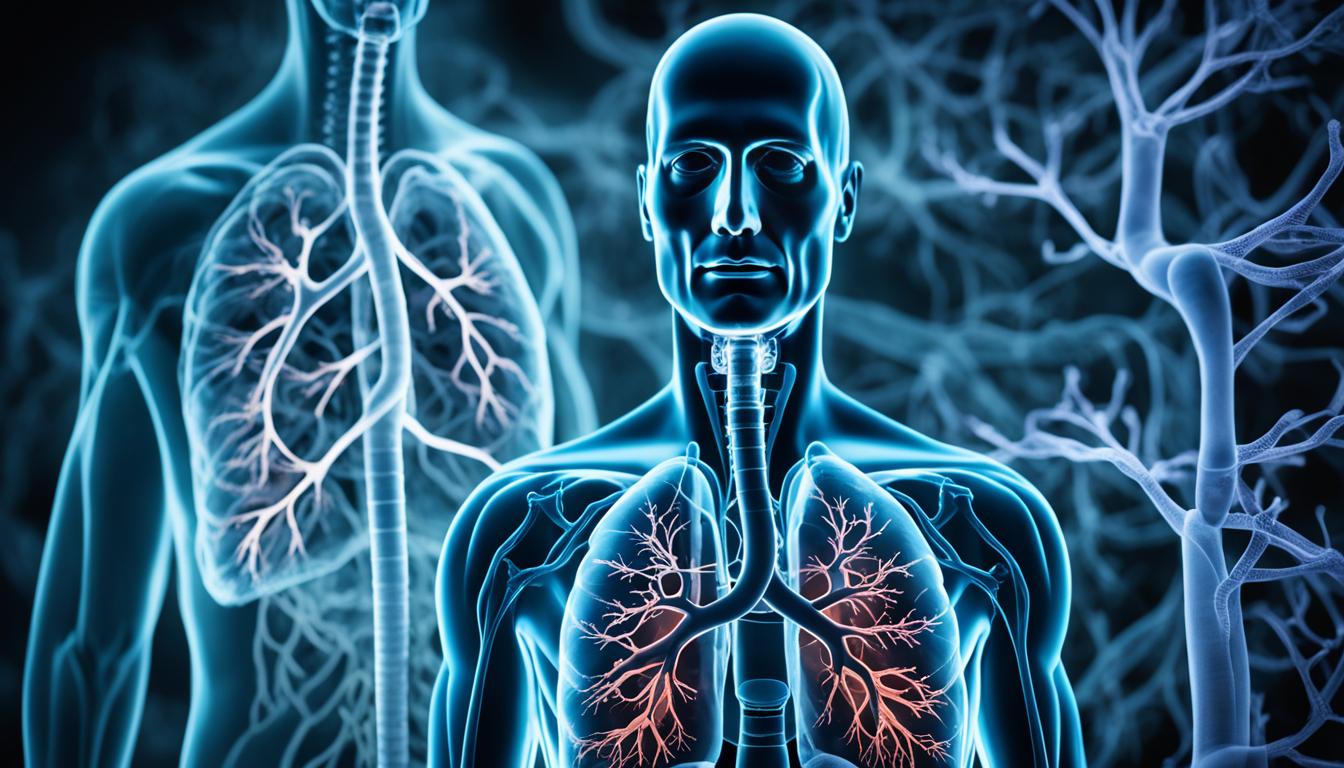Lung cancer causes more cancer deaths than any other type. It’s the same in Thailand. Often, people don’t know they have it until it’s quite advanced. The main cause is the growth of wrong, mutated cells in your lungs. Lung cancer has two big types: small cell lung cancer (SCLC) and non-small cell lung cancer (NSCLC). The kind you have decides what kind of treatment you might need.
Signs of lung cancer can be a long-lasting cough, coughing up blood, being out of breath, feeling tired, and chest pain. Things like smoking, breathing second-hand smoke, or being around asbestos put you at higher risk. Tests to find lung cancer can include X-rays, looking at your sputum (the stuff you cough up), and taking a small piece of lung to check under a microscope.
To treat lung cancer, doctors might use surgery, radiation, or drugs like chemotherapy. People with lung cancer might also get special drugs that target just the bad cells or boost their immune system. Some treatments can be done at home to help with symptoms. It’s very important to try to avoid things like smoking and being around asbestos to lower your chances of getting lung cancer.
Key Takeaways:
- Lung cancer is the leading cause of cancer deaths globally
- There are two major types of lung cancer – small cell lung cancer (SCLC) and non-small cell lung cancer (NSCLC)
- Lung cancer symptoms include chronic cough, coughing up blood, shortness of breath, fatigue, and chest pain
- Common risk factors for lung cancer include smoking, second-hand smoke exposure, previous radiation therapy, and exposure to radon gas or asbestos
- Treatment options for lung cancer include surgery, radiation therapy, chemotherapy, targeted therapy, and immunotherapy
Types and Stages of Lung Cancer
Lung cancer is a top cause of cancer deaths. It has two main types: small cell lung cancer (SCLC) and non-small cell lung cancer (NSCLC). SCLC is fast-growing and spreads quickly, more than NSCLC which is slower.
Heavy smokers and those around second-hand smoke or pollution often get SCLC. So, spotting it early is vital. NSCLC, on the flip side, is more common and can happen to both smokers and non-smokers.
The stages of cancer show how far it has spread. SCLC has two stages: limited and extensive.
- Limited Stage: The cancer is in one lung and may have reached nearby lymph nodes.
- Extensive Stage: It has spread further to other lungs, chest, and possibly beyond.
NSCLC divides into four stages:
- Stage I: The cancer is still just in the lung and hasn’t affected other areas.
- Stage II: It is larger and could involve nearby lymph nodes.
- Stage III: It stretches outside the lung to lymph nodes and nearby areas.
- Stage IV: The cancer has traveled to distant parts of the body.
Comparison of Small Cell Lung Cancer (SCLC) and Non-Small Cell Lung Cancer (NSCLC) Stages
| SCLC | NSCLC |
|---|---|
| Stage I | Localized |
| Stage II | Locally Advanced |
| Stage III | Advanced |
| Stage IV | Metastatic |
Knowing the types and stages is key for diagnosis and planning how to treat. Finding it early, through screenings and teaching about the risks, can lower the disease’s effect and raise survival chances.
Diagnosis and Treatment of Lung Cancer
Doctors check for lung cancer in a few ways. They use imaging tests like low-dose lung CT scans to spot odd growths in the lungs. Sputum cytology and biopsies help gather tissue samples for more testing. When they find the type of lung cancer, they pick the best treatment plan.
Treatments for lung cancer range from surgery to immunotherapy. Surgery removes the tumors in the lung and nearby lymph nodes. Radiation therapy and chemotherapy kill cancer cells with high-energy beams or medicine. Targeted therapy blocks cancer growth by targeting its pathways. Immunotherapy uses the body’s own defenses to fight cancer.
The outlook for lung cancer changes with the diagnosis stage and health of the patient. It’s key for patients to take care of themselves and get palliative care for symptom relief.

